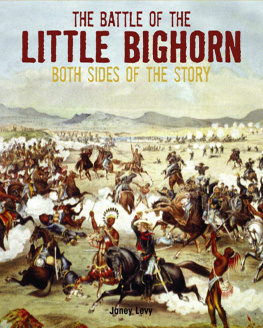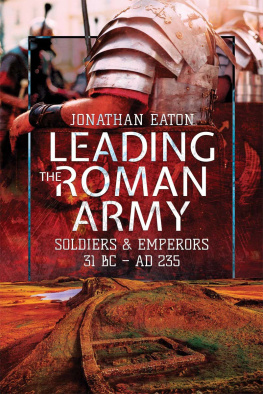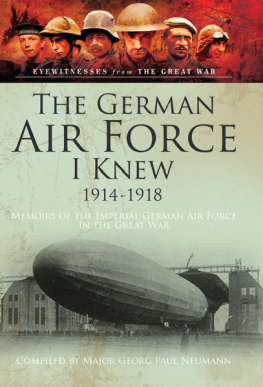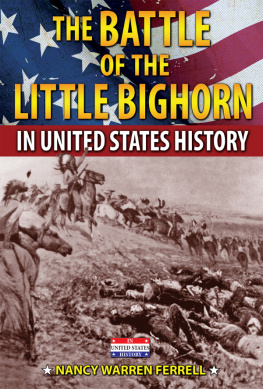
This edition is published by PICKLE PARTNERS PUBLISHINGwww.picklepartnerspublishing.com
To join our mailing list for new titles or for issues with our books picklepublishing@gmail.com
Or on Facebook
Text originally published in 2001 under the same title.
Pickle Partners Publishing 2014, all rights reserved. No part of this publication may be reproduced, stored in a retrieval system or transmitted by any means, electrical, mechanical or otherwise without the written permission of the copyright holder.
Publishers Note
Although in most cases we have retained the Authors original spelling and grammar to authentically reproduce the work of the Author and the original intent of such material, some additional notes and clarifications have been added for the modern readers benefit.
We have also made every effort to include all maps and illustrations of the original edition the limitations of formatting do not allow of including larger maps, we will upload as many of these maps as possible.
The Military Decision Making Process and the Battle of the Little Bighorn
By
Jonathan T. Neumann, Major U.S. Army
TABLE OF CONTENTS
Contents
TABLE OF CONTENTS
REQUEST FROM THE PUBLISHER
LIST OF ILLUSTRATIONS
Brevet Major General George Armstrong Custer
General Phil Sheridan, Commander, Military Division of the Missouri
Colonel John Gibbon, Commander, Montana Column
General George Crook, Commander, Department of the Platte
Map of the Campaign of 1876
Cadet Custer
Come On You Wolverines, Custer at Gettysburg
Map of the Little Bighorn Area of Interest and Area of Operations
Crazy Horse
Sitting Bull
The Crows Nest
Captain Benteen and Major Reno
Custers View of the Indian Village
Yates assault from Medicine Tail Coulee
Last Stand Hill
Little Bighorn Battle Map
Maps of Laramie Treaty of 1868 in Appendix A
PREFACE
As a boy growing up in Southeastern Montana, I lived near many monuments to George Armstrong Custer. I was born in Custer County. The Custer National Forest was a favorite hunting and camping get-away, and the towns of Custer, Montana and Custer, South Dakota, are both along highways my family often traveled. The story of Custers Last Stand, as it was known to me, drew my interest even then.
Having chosen a military history field of study at West Point, I studied the very basics of the Indian wars of the American west and always tied those lessons to where I grew up. As an Army officer, my continued study of military history has led to many opportunities to evaluate military leaders and their prosecution of campaigns. It is always a challenge to study historical warfighting in the context of modern military thinking.
In this essay I have attempted to recreate and assess the military decisions made by George Armstrong Custer at the Little Bighorn using his training and educational background combined with current doctrinal tools. Without allowing hindsight to enter the mix, it would be hard to make the decisions Custer did if applying modern standards. I believe that through that challenge, todays military leaders can learn many lessons and better understand the historical precedence of the battle.
I wish to acknowledge the assistance of the Marine Corps University Foundation who funded my research trip to the battlefield; Mr. John Doerner, the battlefield historian at the Little Bighorn National Monument, who dedicated an entire day to my questions and research; Dr. Glenn Robertson of the U.S. Army Command and General Staff College, Fort Leavenworth, Kansas, who shared resources, and Dr. Donald Bittner of the Marine Corps Command and Staff College who kept me on azimuth.
EXECUTIVE SUMMARY
Thesis: Based on his background, education, training, and the information available at the time of his attack, Lieutenant Colonel George Armstrong Custer made good decisions as he lead the 7th Cavalry in its defeat at the Little Bighorn.
Discussion: Custer received the standard pre-commissioning education that West Point used to mold all future Army leaders. That education served him well in the Civil War where he enjoyed tactical success and a meteoric rise to fame and high rank. Following that conventional conflict, Custer entered into world of irregular warfare and voluntary forces. His defeat at the Little Bighorn ended 10 years of development as an unconventional warrior. Despite the common perception that his decisions invited disaster, by using the current Military Decision Making Process, and the intelligence available to him professionals of today can recreate the command decisions he made that day in June 1876 and possibly conclude that they were not to blame for the defeat.
Conclusion: Custers military decisions are very similar to those a current leader would make using current military decision making doctrine.
THE MILITARY DECISION MAKING PROCESS AND THE BATTLE OF THE LITTLE BIGHORN
Project Objective
Military leaders make decisions every day that effect their commands and the lives of the men and women assigned to their organizations. Those decisions are made based on education, training, and experience. The military has developed set processes designed to assist the commander in developing a plan or specific course of action. Current Army doctrine employs such a process or tool, called, the Military Decision Making Process (MDMP), to assist the commander and staff in developing a plan. {1}
No military decisions are more important than those made in combat. Historians and scholars have analyzed and critiqued the combat decisions of military leaders throughout history, from Hannibal to Schwarzkopf. Commanders who both win or lose battles, campaigns, or wars have their decisions studied and at times questioned. However, commanders who lose in battle often, have their actions examined far more closely and critically. {2} Few commanders in history have been as thoroughly studied and chastised for decisions made in battle than Lieutenant Colonel George Armstrong Custer.
On June 25, 1876, as the nation prepared to celebrate its centennial and begin the process of selecting a new president, the Army was engaged in a campaign designed to subdue a non-conforming group of Sioux and Cheyenne Indians on the northern great plains. One clash from that campaign, the battle of the Little Bighorn, saw the defeat of Custers 7th Cavalry. It rivals Gettysburg, Pearl Harbor, and D-Day as one of the most publicized, studied, and analyzed military actions in American history.
In the history of the nations battles with its indigenous peoples, the battle of the Little Bighorn is one of the worst defeats the Army suffered. The 1791 destruction of General Arthur St. Claires expedition against the Miami Confederation, and the 1835 annihilation of Major Dades column in the Second Seminole War, are two other examples of the cost associated with the manifest destiny of this nation of transplanted peoples. {3} While those other two Indian victories have faded from public knowledge (if they ever were common knowledge), the defeat of the 7th Cavalry in Montana remains vivid in Americas culture. In his exhaustive character study of the battle, Evan S. Connell writes, The Battle of the Little Bighorn has been stamped on America with the force of a prehistoric red handprint on a rock. {4} Military historians have published an exhaustive number of studies examining the Armys conduct at the Little Bighorn, and they continue to do so every year. Even more reviewed is the performance of Custer. As a military commander, he has been labeled heroic, careless, and/or derelict.








